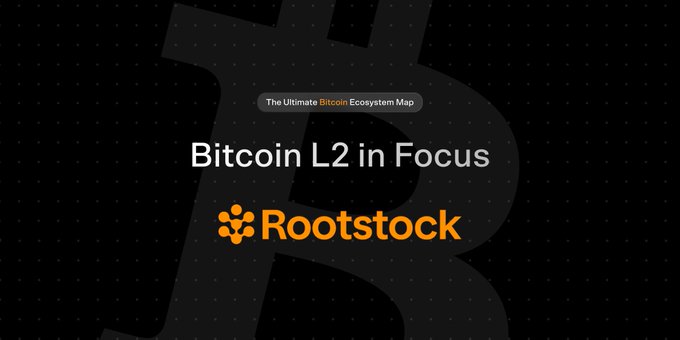Bitcoin L2 Rootstock: Bringing Smart Contracts to Bitcoin
Bitcoin L2 Rootstock: Bringing Smart Contracts to Bitcoin
🔑 Unlocking Bitcoin's Potential...
Rootstock is a smart contract platform built on top of Bitcoin, allowing for the deployment of Ethereum Virtual Machine (EVM) compatible smart contracts while leveraging the security of the Bitcoin network. Its core architecture includes the Rootstock Virtual Machine (RVM), a two-way pegged Bitcoin sidechain, a merge-mining-based consensus protocol, and a low-latency block-propagation network. Rootstock is important for the Bitcoin ecosystem as it enables stable value of assets collateralized by Bitcoin, protects Bitcoin miners' investments post-halving, introduces innovative sidechain technology, and provides a low-cost Bitcoin payment network. For Ethereum developers and users, Rootstock offers EVM standardization, reduced persistent chain fork risks, enhanced security, and increased transaction throughput by porting decentralized applications (dApps) to RSK. Key benefits of building on Rootstock include being secured by Bitcoin's Proof-of-Work, interoperability with Ethereum, a 1:1 pegged RBTC token to Bitcoin, enabling DeFi on Bitcoin, and being future-proofed and decentralized.
🔶 Bitcoin L2 in Focus: Rootstock @rootstock_io lets you deploy EVM-compatible smart contracts and leverage the security of the Bitcoin network. This is a deep dive into Rootstock, its architecture, and its importance for the Bitcoin and wider Web3 ecosystem. 🧵
🔮 DIA Oracle Expansion
**DIA deploys three new production-ready price feeds:** - **$sUSDe** - Ethena Labs' staked synthetic dollar offering yield-bearing rewards - **NFT Strategy tokens** - Token Works' automated protocol solutions - **GBP/USD** - British Pound forex pair as Real World Asset (RWA) feed All feeds use **verifiable first-party data** and are available across DIA's 60+ supported blockchain networks. Developers can now integrate these feeds into their dApps or request custom oracle solutions tailored to specific needs.
🏛️ Vault Summit explores where vaults end and funds begin
**Vault Summit** brings together industry leaders to examine how vaults are transforming onchain asset management. On November 18th, experts from **Morpho Labs**, **Gauntlet**, **Kiln Finance**, and **Nexus Mutual** will discuss the evolving boundary between vaults and traditional funds. The discussion comes as vaults gain prominence in DeFi: - Curated vaults on Morpho now represent **50%+ of all ERC-4626 vault deposits** - Industry reports highlight vaults as the **new standard for asset curation** - The vault model is reshaping how assets are managed onchain This summit addresses a critical question facing the industry: as vaults become more sophisticated, where do they end and traditional fund structures begin?
🔗 DIA Oracles Add GBP/USD Price Feed

**DIA oracles now support GBP/USD price feeds**, expanding their real-world asset data offerings. The British Pound vs US Dollar pair, known as "Cable," is among the most actively traded forex pairs worldwide. This addition enables: - International settlement operations - Cross-border payment systems - Forex trading platform integration The **GBP/USD feed is production-ready** and follows DIA's auditable source-to-destination chain methodology. This builds on DIA's recent expansion, which included adding the Nigerian Naira (NGN/USD) price feed in October, demonstrating their commitment to providing diverse currency pairs for DeFi applications. Access the feed: [GBP/USD on DIA](https://www.diadata.org/app/rwa/GBP/)
🔗 DIA Oracles Add sUSDe Price Feed

**DIA oracles now provide price feeds for sUSDe**, Ethena Labs' staked synthetic dollar. **What is sUSDe?** - Yield-bearing version of USDe synthetic dollar - Users stake $USDe to receive $sUSDe tokens - Earns protocol rewards from delta-hedged positions and DeFi integrations **Oracle Integration** The live sUSDe price feed is accessible through [DIA's platform](https://www.diadata.org/app/price/asset/Ethereum/0x9D39A5DE30e57443BfF2A8307A4256c8797A3497/), expanding data availability for developers building onchain products. This follows previous oracle integrations, including API3 Market support for sUSDe/USDe exchange rates across 17 blockchains.
🔮 Oracle Expansion Continues
**DIA oracles expand with four new price feeds this week:** - **$INTC** (Intel) - **$HBAR** (Hedera) - **$LTC** (Litecoin) - **$XG** (Copper) All feeds use **transparent, first-party data** sourced directly from trading venues. **Key highlights:** - Over **10,000+ supported feeds** now available - Production-ready across **60+ blockchain networks** - Built for enterprise-grade reliability This expansion follows recent individual launches of $LTC and $HBAR feeds, demonstrating DIA's commitment to providing comprehensive oracle infrastructure. [Explore all feeds](https://www.diadata.org/app/)

